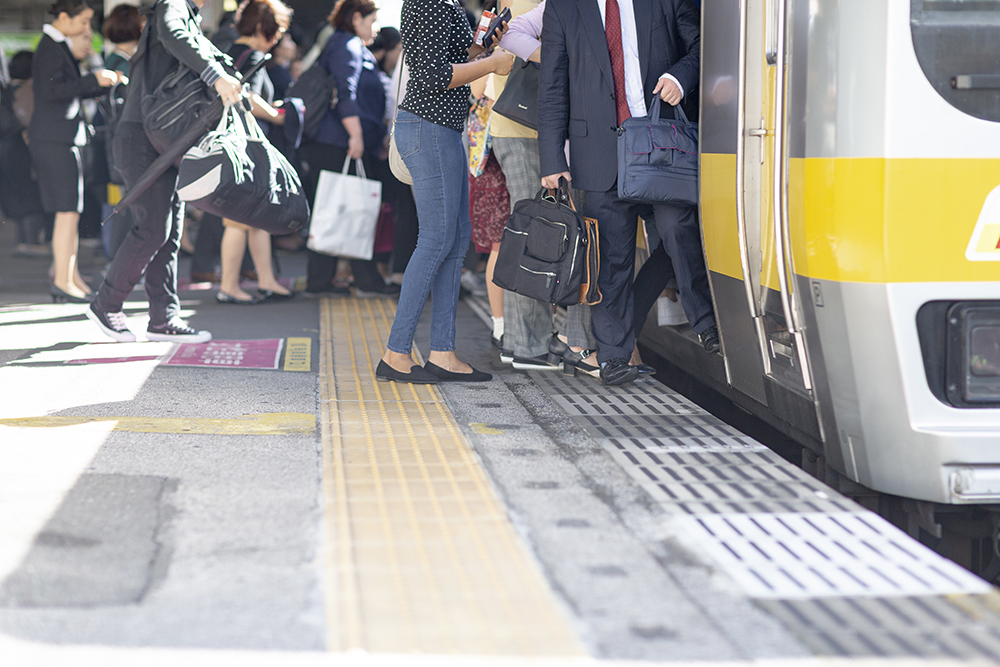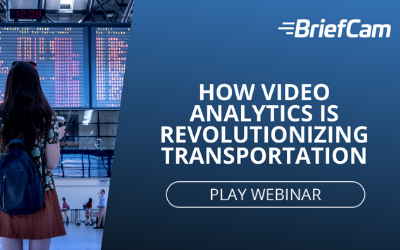What is Video Content Analysis for Transportation Optimization?

Technology Solutions for Streamlined and Secure Transit
Regardless of the transport channel – whether service for passengers or cargo, from aviation to buses, subways, commuter ferries, ships, and trains – every transit agency has to keep its customers satisfied. To achieve this, transport companies endeavor to move goods and people to their destinations as quickly and as safely as possible. For airports, bus terminals and rail stations alike, operational and security managers of transport hubs facilitate this movement by adopting data-driven technologies.
Equally critical for transportation managers is ensuring the physical security and safety of travelers and transit hubs, and they are on the constant look out for technologies that enable a proactive and preventative approach to security. While many of today’s standards for transport security are counter-terrorism measures, transit managers are also combatting more common, everyday security concerns, such as overcrowding and traffic bottlenecks; trespassing or unauthorized intrusion; theft, vandalism and assaults, among others. Law enforcement and security staff spend considerable resources to monitor and maintain public areas, such as parking garages, passenger platforms, terminals, and restrooms, as well as restricted areas, including maintenance facilities and loading areas.
Video Surveillance for Transit Security & Management
These security and operational managers cover a lot of territory, which is why video surveillance (CCTV) systems have become such a critical part of transport security. Video surveillance infrastructure serves as security’s eyes on the scene for monitoring various transit system areas and responding efficiently and effectively to security incidents as they unfold.

However, there is always more video produced than security staff to monitor it – whether in real time or for post-event investigation after an incident transpires. And, with the evolution of surveillance infrastructure, most camera networks have expanded over the years, and they generate unwieldy amounts of footage. There is plenty of video data to review but not enough personnel or time to review it. Even if there were adequate resources to manually review video, the threats of human error and distraction would render the analysis incomplete: For these reasons and more, valuable video data is often archived but seldom reviewed or leveraged.
Analyzing and Utilizing Video Data
That’s where video content analytics software comes into play. Powered by Deep Learning and artificial intelligence (AI), video analytics detects, extracts, and classifies all objects in video and structures the data, so it becomes searchable, actionable and quantifiable. By harnessing video data, transportation agencies can improve situational awareness to drive real-time response; rapidly investigate incidents and crimes; and identify and understand traffic trends and visitor demographics over time.
Increase Real-time Situational Awareness
Transit managers and security personnel can leverage video analytics software to increase situational awareness by setting up real-time, rule-based alerts for the objects detected and extracted from the video. By triggering a call to action, the video intelligence system brings relevant events to the fore, so that security can make intelligent decisions about whether to monitor or deploy responders to intercede. For example, security may proactively prevent incidents by identifying suspicious loitering in restricted areas or overcrowding – which could escalate and lead to violent outbursts.
Where permitted, facial recognition technology enables security to respond immediately to individuals pre-defined as suspicious. Once the operator uploads or captures digital images of the individual to a watchlist, any time the person is detected an alert is triggered to enable qualified security responders to assess and decide how to react. Even in jurisdictions where facial recognition is not permitted or in environments where it cannot be effectively utilized, video analytics enables security to detect specific activity across multiple cameras in real time. By configuring alerts for persons of interest based on other criteria, such as gender, clothing or vehicle color, personnel can be notified any time a match is detected that may require closer investigation.
Of course, these same notification principles can be applied for a breadth of other use cases, such as reuniting a missing child with his or her parent in a busy transit terminal or monitoring for crowding using count-based alerts to notify operators when the number of pedestrians or vehicles exceeds a customized threshold.
Accelerate Post-incident Security Investigations
While alerts enable transit managers to respond preventatively and proactively as events unfold, video content analysis is also critical for reacting after a security event or crime has transpired. Post-event, it is often necessary to review video footage to understand what occurred and extract evidence. Video content analytics dramatically accelerates these investigations by enabling operators to quickly filter and search for relevant details in video, bringing the most useful and critical information to the forefront.
Derive Business Intelligence to Improve Operations and Marketing
Beyond the proactive and reactive security enablement, video intelligence software drives the aggregation of video data over time, and further equips transport agencies with business intelligence to increase security and efficiency. Operators can create and populate dashboards and reports based on video data, making it easier to identify patterns and trends and leverage the information for effective management and continuous improvement.
Video data can be transformed into easy-to-understand, comprehensive intelligence: For example, transit managers can create customized dashboards that illustrate peak travel times/days, so they can make data-driven decisions about scheduling and services. Similarly, when planning construction projects, maintenance and leasing agreements, they can make informed decisions based on actionable and quantifiable intelligence about pedestrian, vehicle and bicycle traffic patterns. Also, because video analytics software can classify video objects based on a broad set of person attributes, marketing departments can obtain data about the quantities and demographics of customers and develop strategies to better serve and advertise to them.
Given the widespread presence of video camera networks in transportation environments, transit operational teams should consider how to best maximize existing investments and extend the capabilities of their infrastructure by implementing complementary technology such as video content analytics. By improving security and streamlining their operations, transport agencies can enjoy increased passenger satisfaction, mitigate risk and reduce operating costs, while making transit more efficient and secure, for both people and cargo.
Learn more about Video Content Analytics for Transportation this week, 25-26 February 2020, at the Middle East Rail and Smart Mobility event in Dubai – you can pre-register for a personalized BriefCam platform demonstration to discover how to revolutionize your business operations and security by transforming video into actionable intelligence.
Signup to receive a monthly blog digest.